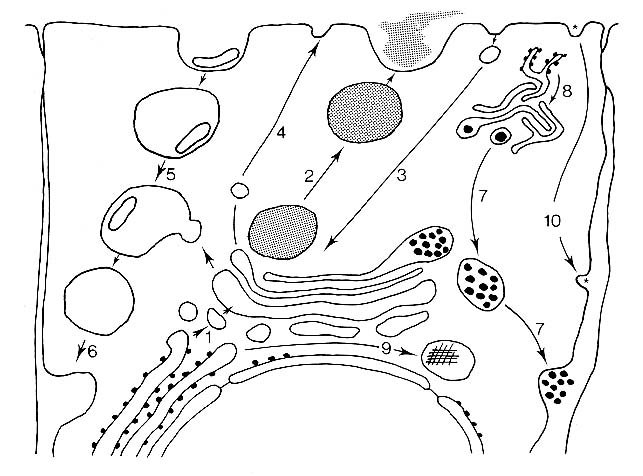Interrelations Of Cell Membranes
Interrelations Of Cell Membranes Assignment Help | Interrelations Of Cell Membranes Homework Help
Interrelations of the Cell Membranes
There is a close structural and functional relationship between the different membrane systems of the cell. Sjostrand (1956) proposed the following terminology for the different membranes;α cytomembranes for the rough-surfaced ER,
β cytomembranes for the infoldings of the plasma membrane, and
γ cytomembranes for the smooth surfaced membranes of the Golgi complex.
Because of the close functional relationship between the Golgi complex endoplasmic reticulum and lysosomes Novikoff has denoted the system as the GERL (Golgi Endoplasmic Reticulum Lysosomes) system.
Demonstrated a continuity between the outer nuclear membrane and the ER. The perinuclear space between the two nuclear membranes opens into the space enclosed by the ER membranes. The ER as an extension of the nuclear membrane. The difference between the membranes of the ER and the membranes of the nuclear envelope is that the ER lamellae have ribosomes on the both surfaces, while only the outer nuclear membrane is covered with ribosomes. Chemical analyses have indicated that although the two membranes systems have the same general composition, there are difference in enzymatic activity, protein content and lipid content. The outer nuclear membrane as representing and undifferentiated segment of the ER. The ER sometimes shows connections with the plasma membrane and is thus in communication with the outside of the cell.
In the following account the origin of the different cell membranes has been summarized.
(1) The outer membrane of the nuclear envelope from vesicles by ‘blebbing’. These vesicles fuse to form annulate lamellae. The annulate lamellae lose their pore complexes, acquite ribosomes and develop into the lamellae of the ER.

(2) The Golgi membranes have been variously described as originating from the plasmalemma, nuclear envelope, annulate lamellae and endoplasmic reticulum.
(3) Vesicles arising from the Golgi complex fuse the form the plasmalemma.
(4) The Golgi complex cisternae from primary lysosomes by blebing. These fuse with pinocytic vesicles formed from the plasmalemma to form lysosomes. The lysosomes can also directly arise from the endoplasmic reticulum.